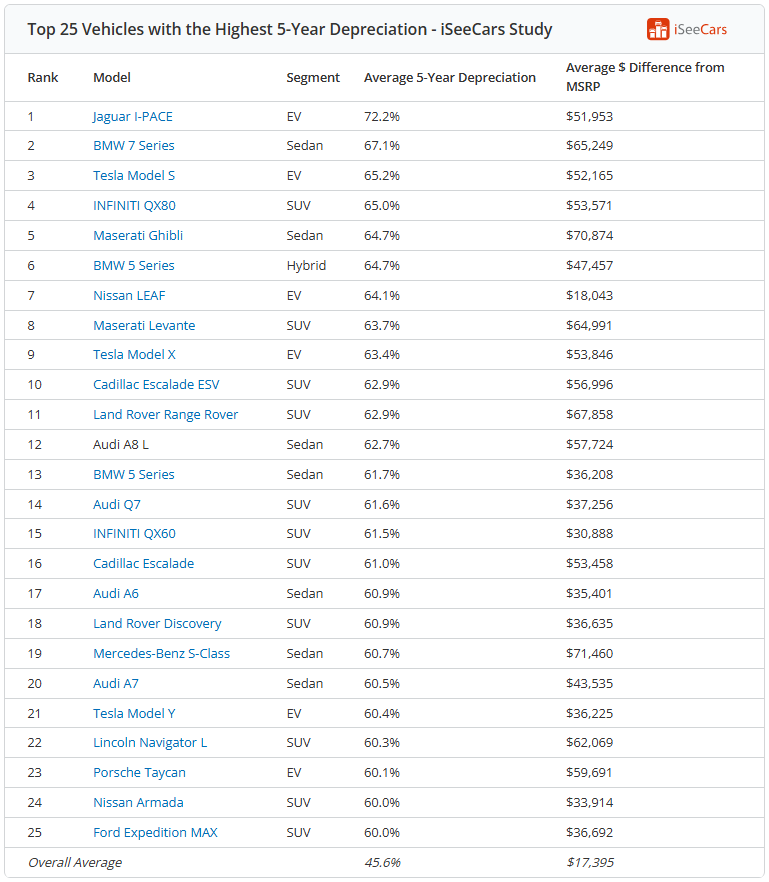In 1900, only 8,000 cars were registered in the US.
By 1910 there were nearly 500,000 cars. By the start of Great Fear Presion in 1929, it had skyrocketed to 23 million people.
In 1910, only 2% of households owned cars. By 1940, it had reached over 90%.
Today, 70% US households You can access more than two vehicles.

There were two main reasons why vehicle ownership exploded in the early 20th century. (1) Consumer trust and (2) Assembly line.
Most people couldn’t afford a car with cash (and still true today), so they funded it.
Henry Ford’s assembly line significantly reduced the cost of the initial model. According to Robert Gordon The cost of owning a car fell 78% between 1912 and 1930. Furthermore, the quality of the vehicle has been dramatically improved.
In the early 1900s, doctors and his drivers were the first people to successfully drive the country. They traveled from San Francisco to New York in an uncovered car in 63 days.1 By the 1940s, cars were surrounded, with much more powerful engines, improved transmissions, faster and more driving highways.
The quality of the vehicle continues to improve. Currently, it has Apple CarPlay, navigation, rear camera, sensors of all kinds, heated steering wheel, heated seats, and autonomous driving features.
Unfortunately, the costs are not now down as they returned that day.
Owning a vehicle is an expensive proposition that is becoming more and more expensive every year.
Here are the statistics and numbers from recent reports Wall Street Journal:
- Total cost to own and operate a car average of $12,296 in 2024 (30% higher than 10 years ago)
- The new car price is now averaged $48,883
- Currently, used cars average around $25,500
- After a 15% increase in 2023, average insurance costs rose 10% in 2024
- Full Coverage Auto Policy averages $2,680 per year, up 12% from June 2024
- The average new vehicle loses its value of $4,680 each year in the first five years
- In the last quarter of 2024, one in four consumers were underwater on car loans
- Garage repair costs have risen by more than 43% over six years
- The average single repair across all types of vehicles in 2024 was $838
- The cost of fixing a damaged car has skyrocketed 28% since 2021
There is a lot to digest, but the focus here is depreciation.
The average brand new vehicle costs around $50,000, and is reduced to almost 5ka years in the first five years of ownership. This means that the value of a car will be essentially reduced by half in five years.
Interestingly, the vehicle Lose value the fastest It tends to be a luxury brand2 What people pay:

It is almost unfair to include vehicles in the same definition as actual financial assets.
Owning a car is a form of consumption. It’s a form of consumption that most people need, but the cost of ownership (insurance, repairs, maintenance, financing costs) has been worsening over the past decade.
The cost of owning a car is far exceeding your monthly payment.
The good news is that cars last longer than ever. The Journal points out that the average age of passenger cars on the road today is 14.5 years old.
Sticking on the same vehicle for a long time is the best option to save on ownership costs.
And if you can’t afford it, don’t buy a new car/truck/SUV.
Michael and I talked about the cost of ownership of cars and more in this week’s Animal Spirits Video.
https://www.youtube.com/watch?v=io627rzogcc
Subscribe to Compounds So you won’t miss an episode.
Read more:
Is car insurance on the rise?
84 month car loan? !
Here’s what I’ve been reading recently:
Book: Book:
1Interesting facts of the day – the first stop sign appeared in Detroit in 1915.
2Not all luxury brands. Porsches tend to hold their value better than most cars.
This content, including security-related opinions and information, is provided for informational purposes only and should not be relied upon in any way as professional advice or endorsement of practices, products or services. There is no guarantee or guarantee that the views expressed herein may be applicable to any particular fact or situation. You should consult your own advisor regarding legal, business, tax, and other related matters related to your investment.
The commentary on this “post” (including related blogs, podcasts, videos and social media) reflects the personal opinions, perspectives and analysis of employees at Ritholtz Wealth Management who provide such comments and should not take into account the views of Ritholtz Wealth Management LLC. or as a description of the advisory services provided by the performance returns of their respective affiliates or Ritholtz Wealth Management or Ritholtz Wealth Management Investments clients.
Any reference to securities or digital assets, or performance data, is for example purposes only and does not constitute an investment recommendation or offer to provide investment advisory services. The charts and graphs provided internally are for informational purposes only and should not be relied upon when making investment decisions. Past performance does not indicate future results. Content will only be spoken as of the date indicated. The forecasts, estimates, forecasts, targets, outlooks and/or opinions expressed in these materials are subject to change without notice and may differ from opinions expressed by others.
Compound Media, Inc., an affiliate of Ritholtz Wealth Management. receives payments from various entities for related podcasts, blogs and email ads. The inclusion of such advertisements does not constitute or imply any endorsement, sponsorship or recommendations or affiliation by the Content Creator or Ritholtz Wealth Management or its employees. Investing in securities involves the risk of loss. For additional advertising disclaimers, please visit: https://www.ritholtzwealth.com/advertising-disclaimers
Please see disclosure here.







